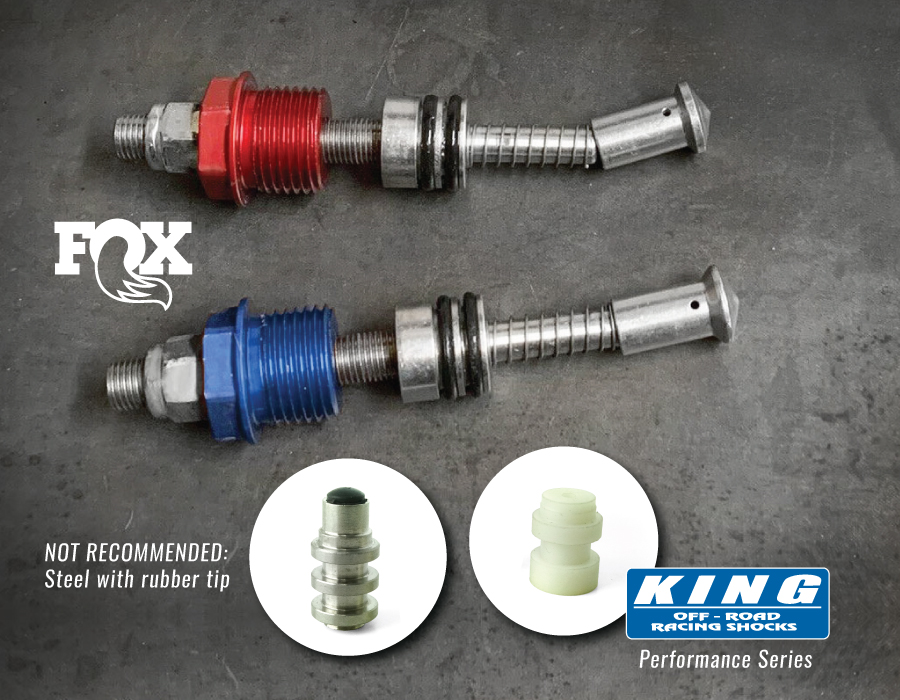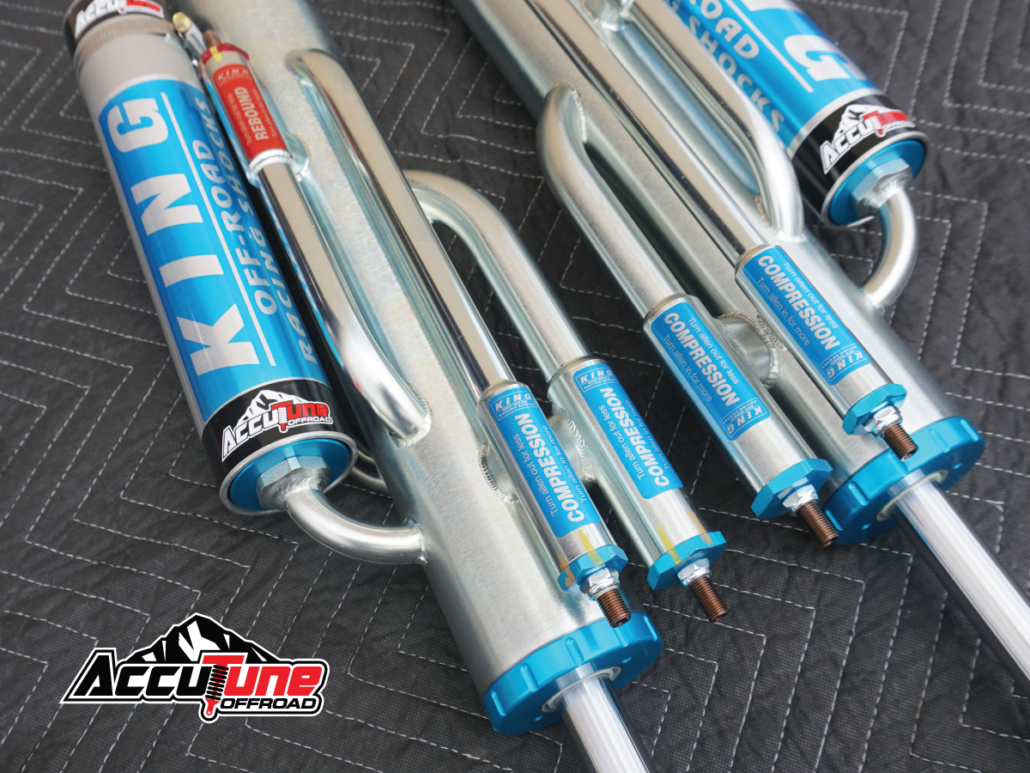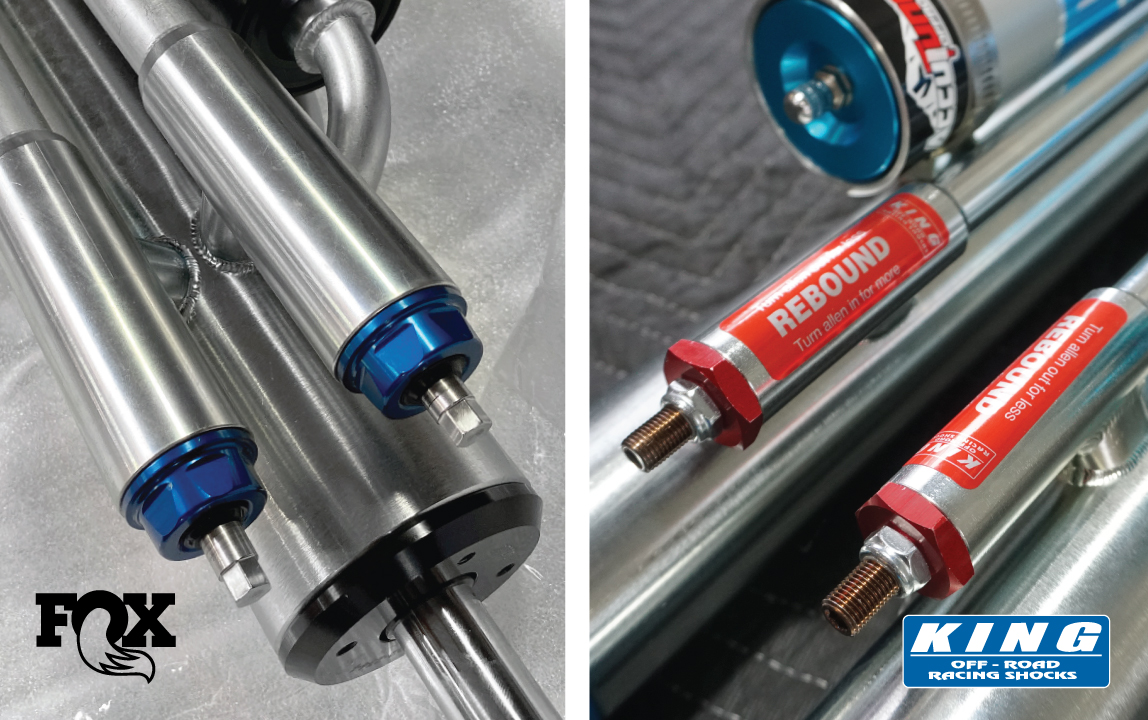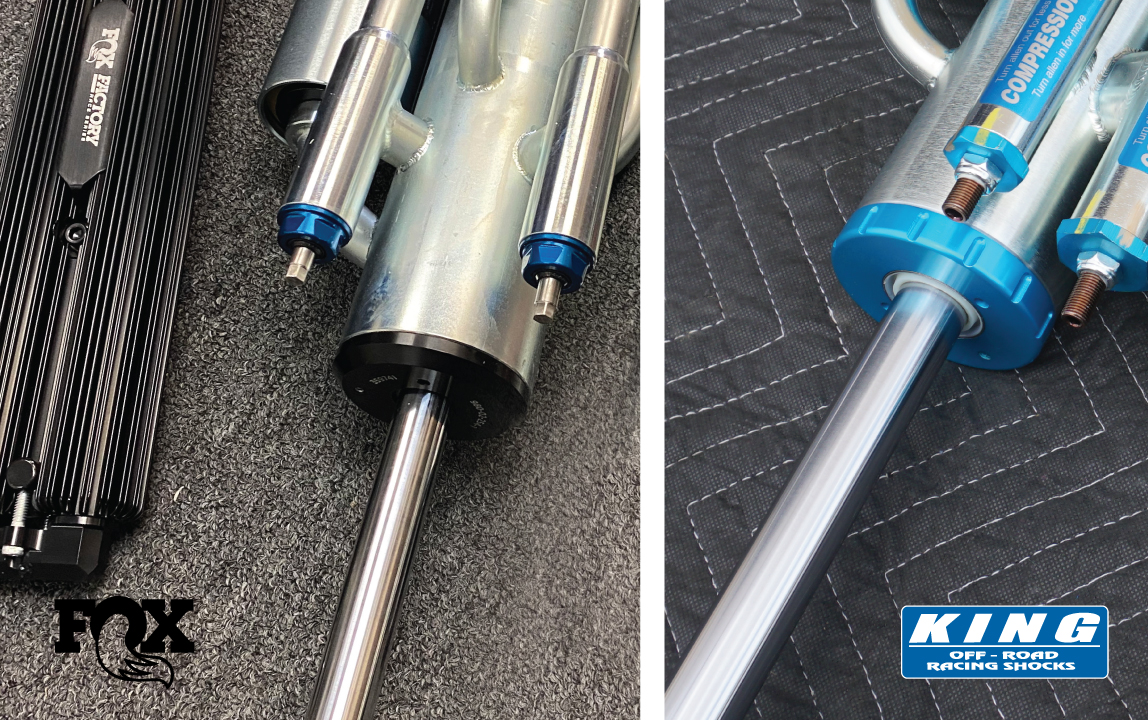April 20, 2021
- How do Bypass Shocks Work?
- Shock Zones & Basic Tube Layout
- Bottom Take Off Reservoir
- Off the Shelf Options
- Multiple Compression & Rebound Tubes
- Staggered vs Overlapping Tubes
- Piggyback vs Remote Reservoir
- Custom Setup Recommendations
- Shock Diameter
- Tube Layout around body
- Tube Heights & Diameter
Bypass Shocks PART 4
- Fox vs King Comparison
- Check Valve Design
- Pistons
- Bypass Adjusters Screws
- Piston Rods
- Oil Seals
- Bypass Shock Setup
- Up Travel
- Motion Ratio – Coilover and Bypass
- Total Weight
- Weight Distribution (front/rear)
- Unsprung Weight
Recap
-
King Performance Series bypass shocks are a budget-friendly option featuring smaller-than-standard tubes arranged in a staggered layout.
-
King Race Series and Fox Factory Series bypass shocks use larger tubes in an overlapping configuration.
-
For example, in 2.5” diameter shocks, the Fox Factory Series and King Race Bypass shocks flow three times more oil than the King Performance Series, resulting in significantly better tunability.
Bypass Check Valve
King Performance Series shocks are designed with cost in mind and come standard with plastic check valves. These plastic valves are not ideal for hard use or racing, as they commonly get stuck inside the bypass tubes. Steel check valves are available as an upgrade for an additional cost.
Note: We do not recommend steel valves with rubber tips, as the rubber often fails and breaks apart.
King Race Series bypass shocks are purpose-built for racing and have a strong track record of success. However, there are a few important considerations to keep in mind:
-
King uses stainless steel for both the plunger and check spring. While stainless steel resists corrosion, it loses strength at high temperatures. For this reason, we recommend replacing the springs during every rebuild if you’re racing or regularly running the shocks hot.
-
The long stem on the King bypass valve can be prone to breakage if the tubes are run fully open. We suggest running the tubes at least two turns closed or replacing the valves during frequent rebuilds to avoid failures.
Fox Factory Series bypass shocks feature a simple design with a tapered seat, which helps reduce noise compared to other shocks. They use carbon steel springs that are more durable and don’t require replacement as often as some alternatives.
Pistons
Fox offers multiple piston options for each size bypass shock, tailored for either high-flow or low-flow needs based on your specific application. This variety provides valuable flexibility when tuning a diverse range of vehicles and setups.
Adjusting Screws
King Performance Series and Race Series bypass shocks use a traditional screw-and-jam-nut design to control plunger position. This setup allows adjusters to be set at any position, but requires the tuner to carefully track how far the screw has been turned for consistent tuning.
In contrast, Fox Factory Series bypass shocks feature spring-loaded detents that provide tactile feedback and indexed adjustments—offering ¼-turn increments for ¾” tubes and finer 1/8-turn increments for 1” tubes—making precise tuning easier and more repeatable.
Shafts
King uses chromoly shafts in both their Performance and Race Series bypass shocks; however, these shafts are not surface hardened. This makes the shaft surface softer than industry standards and more susceptible to nicks and dings. For this reason, we recommend using boots on all bypass shocks to extend their lifespan.
Fox, on the other hand, uses stainless steel shafts that are nearly twice as hard and twice as strong as King’s chromoly shafts. Even with these tougher shafts, it’s still a good idea to run boots or shaft guards for added protection.
Seals
King Performance Series bypass shocks come standard with NBR seals, while King Race Series and Fox Factory Series use Viton seals, which offer significantly greater durability at high temperatures.
There are additional differences between these shock lines discussed in this article, but these factors typically shouldn’t be the primary deciding points when choosing which shocks to purchase.
Summary
Fox and King both produce high-quality racing shocks that are proven leaders in competitive motorsports. The differences in materials and components are significant and should be considered alongside tube layout and tube size when selecting the best shock for your application.



















